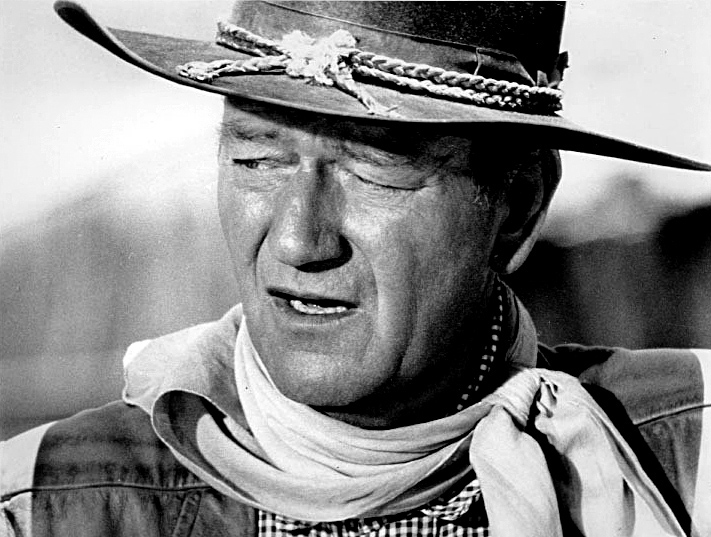1. Birth Name and Early Years
John Wayne was actually born Marion Robert Morrison on May 26, 1907, in Winterset, Iowa. Despite his Hollywood persona, his original name remained legally Marion Robert Morrison throughout his life, although he often claimed it was Marion Michael Morrison. This contradiction adds a layer of intrigue to his early identity.
2. “The Duke” Nickname
Wayne earned the nickname “Duke” during his childhood in Glendale, California. A local fireman started calling him “Little Duke” because he was always seen with his large Airedale Terrier, Duke. Wayne preferred this nickname to his given name, Marion, and it stuck with him throughout his life.
3. Athletic Beginnings
Before his acting career, Wayne was an accomplished athlete. He played football for the Glendale High School championship team and later for the University of Southern California (USC). However, a bodysurfing accident caused a broken collarbone, ending his athletic career and his scholarship at USC.
4. First Leading Role and Stage Name
Wayne’s first leading role was in the 1930 film “The Big Trail,” directed by Raoul Walsh. It was Walsh who suggested the stage name “John Wayne,” which the studio accepted. Wayne himself was not present during the naming discussion, and the decision was made without his input.
5. Career Breakthrough with “Stagecoach”
John Wayne’s breakthrough role came in 1939 with John Ford’s “Stagecoach.” This film elevated Wayne from B-movie Westerns to mainstream stardom, showcasing his ability to portray rugged and charismatic characters. The success of “Stagecoach” cemented his status as a leading actor in Hollywood.
Another fun fact about the film is that the actor’s now iconic line, “Well, there are some things a man just can’t run away from,” was in fact improvised!
6. Iconic Western Roles
Wayne’s career is defined by his iconic roles in Westerns, such as “Red River” (1948), “The Searchers” (1956), “The Man Who Shot Liberty Valance” (1962), and “True Grit” (1969), for which he won the Academy Award for Best Actor. These films helped shape the American Western genre and solidified Wayne’s image as the quintessential cowboy.
7. Patriotism and War Films
Wayne was a staunch patriot and often portrayed military characters. Despite not serving in the military during World War II due to age and family status, he supported the war effort by touring U.S. bases and hospitals with the USO. His roles in war films like “Sands of Iwo Jima” (1949) and “The Green Berets” (1968) further exemplified his patriotic image.
8. Founding Batjac Productions
In 1952, Wayne co-founded Batjac Productions, a film production company named after a fictional company in the film “Wake of the Red Witch.” Batjac produced many of Wayne’s films, including “The High and the Mighty” (1954) and “McLintock!” (1963), allowing him greater creative control over his projects.
9. Political Involvement
Wayne was a vocal conservative Republican and a supporter of anti-communist causes. He campaigned for candidates like Richard Nixon and Ronald Reagan and was involved with the conservative Motion Picture Alliance for the Preservation of American Ideals. Despite his strong political views, he was respected by peers across the political spectrum.
10. Posthumous Recognition
In 1980, John Wayne was posthumously awarded the Presidential Medal of Freedom by President Jimmy Carter, recognizing his significant contributions to American cinema and his embodiment of American values. This honor is the highest civilian award in the United States.
His legacy is also celebrated with statues, museums, and annual events. The John Wayne Cancer Foundation, established in his honor, supports cancer research and patient care, reflecting his enduring impact beyond the silver screen.
11. Signature Western Style
John Wayne’s signature Western style was meticulously crafted and became an integral part of his iconic image. Wayne worked closely with Hollywood costumers and designers to perfect his wardrobe. His typical ensemble included a cowboy hat, boots, blue jeans, and a button-up shirt, often accessorized with a gun belt and holster, and a handkerchief tied around his neck. Wayne’s attention to detail extended to choosing specific hat styles, such as the high-crowned Gus style and the well-worn Cattleman-style hat, to suit different roles and scenes. He was also known to have an impressive collection of hats!
12. The Duke’s Distinct Walk
John Wayne’s distinctive walk became one of his trademarks. It was a result of a football injury sustained during his college years. Despite this injury, Wayne’s walk added to his rugged, imposing screen presence and became a defining feature of his persona.
13. Love for Chess
Wayne was an avid chess player, often playing on movie sets. His passion for the game was well-known among his peers, and he would challenge anyone willing to play. This intellectual pastime contrasted with his tough, cowboy image, showcasing a different side of the actor.
14. The Wild Goose
One of Wayne’s prized possessions was his yacht, the Wild Goose. He spent considerable time on this vessel, which became a symbol of his off-screen life. The yacht is even listed on the U.S. National Register of Historic Places, highlighting its importance to Wayne’s legacy. It also has its own Wikipedia page!
15. Handprint Immortalized
As a testament to his enduring legacy, John Wayne’s handprints and signature are immortalized at the iconic Grauman’s Chinese Theatre (also known as TCL Chinese Theatre) in Hollywood. This historic landmark, known for celebrating the biggest stars in the film industry, includes Wayne’s impressions among its famed concrete slabs. His handprints and signature serve as a lasting tribute to his significant impact on cinema, cementing his status as a Hollywood legend. Visitors from around the world can see and touch the imprints of the Duke, connecting them to the golden age of Hollywood and the legacy of one of its most iconic actors
This article may have been created with the assistance of AI.



